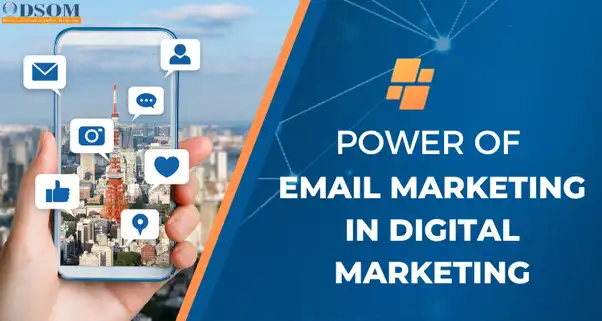Launching Your App Successfully: The Complete Guide to Mobile App Development Timeline
Mia Anderson

Photo: Launching Your App Successfully: The Complete Guide to Mobile App Development Timeline
In the dynamic world of mobile applications, the journey from concept to launch is a thrilling adventure filled with potential pitfalls and immense opportunities. Successfully launching an app demands a meticulous understanding of the development timeline, encompassing the various phases, tasks, and strategies required to introduce a robust and appealing product to the market. This comprehensive guide will navigate you through the intricate world of mobile app development, ensuring your journey is a triumph.
The mobile app development timeline is a roadmap that outlines the steps and duration required to take an app idea from conception to launch. It involves a series of phases, each comprising multiple tasks and milestones. By understanding and effectively managing this timeline, you can increase your chances of a successful app launch, attracting users and standing out in the competitive market. This guide will delve into the key aspects of the mobile app development journey, offering insights and strategies for a seamless and rewarding experience.
Understanding App Development Phases:
The mobile app development process can be broadly divided into several phases, each serving a unique purpose and contributing to the overall success of the project. These phases may vary slightly depending on the development team's preferences and the project's specific requirements, but typically include the following:
1. Planning & Analysis:
This initial phase sets the foundation for the entire project. It involves defining the app's purpose, target audience, and scope, as well as conducting market research and competitor analysis. Here, you also outline the app's features, functionality, and technical requirements, creating a clear development roadmap.
For example, let's say you're developing a fitness tracking app. In this phase, you would define the app's target audience, such as fitness enthusiasts or those looking to lose weight. You would research existing fitness apps, identifying their strengths and weaknesses to find your unique selling point. You'd also determine the app's features, such as workout tracking, calorie counting, and synchronization with fitness devices.
2. Design & Prototyping:
Here, the app starts taking shape visually. The user interface (UI) and user experience (UX) designs are crafted, ensuring the app is not only aesthetically pleasing but also intuitive and easy to navigate. Wireframes and prototypes are created, allowing for early testing and refinement before actual development begins.
Continuing with the fitness app example, the UI/UX designers would create screens and visuals that are not only attractive but also motivate users to track their workouts and progress. Prototypes would be built to test the app's flow, ensuring users can easily navigate between tracking their workouts, viewing progress, and accessing additional resources.
3. Development & Programming:
This phase brings the designs to life through coding. The development team builds the app's functionality, integrates any third-party services, and ensures the app performs as intended. Regular code reviews and testing are conducted to maintain quality and identify issues early on.
During this phase of the fitness app development, the programming team would code the backend logic, database interactions, and user authentication. They would integrate fitness device APIs to synchronize data and ensure the app functions seamlessly across various devices and platforms.
4. Testing & Quality Assurance:
A dedicated testing phase ensures the app is free of bugs and performs optimally. This includes functionality testing, performance testing (to ensure the app can handle expected user demand), security testing, and compatibility testing across different devices and operating systems.
For instance, during testing for the fitness app, the quality assurance team would thoroughly test the app's functionality, ensuring accurate calorie calculations, workout tracking, and synchronization. They would also assess the app's performance under high user load to ensure it remains responsive and stable even with many concurrent users.
5. Launch & Deployment:
The app is now ready for its grand entrance! This phase involves submitting the app to app stores, ensuring compliance with their guidelines, and optimizing the app's store listing, including its title, description, and keywords, for better discoverability.
Launch strategies may include creating a buzz before the release, offering early access to a limited number of users, or partnering with influencers or industry leaders for endorsements. Post-launch, it's crucial to monitor user feedback and app store reviews to address any immediate issues and start planning for future updates.
Strategies for an Efficient App Launch:
A smooth and successful app launch goes beyond simply following the development phases. Here are some strategic considerations to enhance your chances of a triumphant entrance:
- Manage Complexity:
Apps can range from simple to highly complex, with numerous features and integrations. Carefully assess the complexity of your app idea and plan accordingly. Start with the basic features to ensure a solid foundation, and then gradually introduce more complex functionalities. This approach helps manage development timelines and costs while providing a stable platform for future growth.
- Prioritize Efficiency:
Quick app development doesn't have to compromise quality. By prioritizing efficiency, you can reduce time-to-market, staying ahead of the competition. Streamline processes, automate where possible, and adopt agile methodologies to adapt swiftly to changes. Focus on delivering a minimum viable product (MVP) first, and then iterate based on user feedback.
- Understand Demand:
Research and understand your target market to gauge demand for your app. Identify pain points and gaps in existing solutions to position your app as a much-needed alternative. By understanding user needs and preferences, you can tailor your app to meet their expectations, ensuring a warm reception upon launch.
- Collaborate Effectively:
A cohesive app development team is key to success. Foster effective collaboration and communication among team members. Encourage cross-functional interactions to align design, development, and testing efforts. Regular stand-up meetings, clear task allocations, and centralized documentation ensure everyone is on the same page, preventing delays and misunderstandings.
- Embrace Agility:
The app development journey is rarely linear. Embrace agility to adapt to changing market trends, user feedback, and technological advancements. Regularly review and refine your app idea, incorporating new insights. This adaptive approach ensures your app remains relevant and exciting, even before its launch.
Navigating Complexities and High-Demand Apps:
Some apps, by their nature, are more intricate and demanding. These may involve complex features, integrations, or specific performance requirements. Here's how to navigate these challenges:
- Tackle Complex Features:
When incorporating complex features, break them down into manageable modules. Start with a proof of concept to validate the feature's feasibility and potential value. Then, incrementally develop and test each module, ensuring they integrate smoothly with the rest of the app. This modular approach simplifies management and reduces the risk of delays or bugs.
- Ensure Performance:
High-demand apps, such as those in the gaming or social media realm, must be built to handle massive user loads and scalability requirements. Employ performance optimization techniques, such as load testing, database indexing, and server scalability strategies. Collaborate closely with your development team to ensure the app's architecture is designed for performance and reliability.
Conclusion
Launching a mobile app successfully requires a well-planned journey, navigating through the phases of development, testing, and deployment. By understanding the mobile app development timeline and adopting strategic approaches, you can introduce an app that captivates users and stands the test of time.
Remember, each app is unique, and its development journey may vary. Embrace flexibility, stay informed about market dynamics, and continuously seek user feedback. With this guide as your compass, you're well-equipped to embark on the thrilling voyage of mobile app development, steering your app toward success and leaving a lasting impression on the app stores.
I hope this article meets your expectations and wish you success in your app development endeavors!
Marketing
View All
January 21, 2025
Why Digital Marketing is Vital for SMBsDiscover why small businesses must adopt digital marketing in 2024. Learn tips and tactics to compete in the digital age. Take your business online today!
Mia Anderson

January 23, 2025
10 Content Strategies for Digital SuccessCreate winning content with these 10 proven digital marketing strategies. Enhance engagement and conversions starting today!
Mia Anderson

January 25, 2025
Email Marketing in the Digital AgeUnlock the power of email marketing with modern strategies tailored for the digital age. Connect with your audience like never before!
Mia Anderson
Entertainment
View AllDiscover the hottest entertainment news and updates! Stay ahead with the latest trends and exclusive stories. Click now for breaking news.
Mia Anderson
Discover the latest exclusive movie releases that everyone’s talking about. Don’t miss out click to stay ahead of the curve!
Mia Anderson
Discover the latest tips for creating a top fan website in 2024. Learn key strategies and boost your site’s success click to read the complete guide now!
Mia Anderson
Discover the latest tips for creating a top-notch home theater in 2024. Learn expert advice on setup, gear, and design. Start your home theater journey today!
Mia Anderson
Automotive
View AllForecast the EV market of 2030. Learn about expected growth rates, market penetration, and the rise of EV ownership globally.
Read MoreNeed cash fast? Discover how to sell your car for cash with quick and reliable methods!
Read MoreLearn the key factors influencing EV adoption, from cost and range to charging infrastructure and environmental concerns.
Read MorePolular🔥
View All
1
2
3
4
5
6
7
8
9
10
Technology
View All
August 28, 2024
Harnessing Machine Learning Algorithms to Transform Your Insights
Discover the top machine learning algorithms driving innovation today. Learn how they can enhance your data analysis. Click to explore and revolutionize your insights!

August 29, 2024
Discover How Digital Transformation Services Can Revolutionize Your Business
Discover how digital transformation services can revolutionize your business. Explore top solutions to drive growth and efficiency. Read more now!

December 20, 2024
Don’t Buy That Smartphone Until You Read This 2024 Comparison
Make an informed smartphone purchase! Our 2024 comparison guide helps you find the perfect match. Click to learn more.
Tips & Trick






















